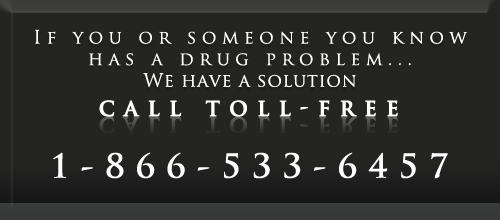Navigate

Illegal Drugs
An estimated 12.8 million Americans, about 6 percent of the household population aged twelve and older, use illegal drugs on a current basis (within the past thirty days). This number of "past-month" drug users has declined by almost 50 percent from the 1979 high of twenty-five million. This decrease represents an extraordinary change in behavior. Despite the dramatic drop, more than a third of all Americans twelve and older have tried illegal drugs. Ninety percent of those who have used illegal drugs used marijuana or hashish. Approximately a third used cocaine or took a prescription type drug for nonmedical reasons. About a fifth used LSD. Fortunately, nearly sixty million Americans who used illicit drugs during their youth stop using drugs once they enter into adulthood.
Many people believe that illegal drugs and the many troubles they cause are not their problem. They have misconceptions that drug users belong to a segment of society different from their own or that drug abuse is remote from their environment. They are wrong. Almost three quarters of drug users are employed and approximately forty-five percent of Americans know someone with a substance abuse problem.
While illegal drugs and their consequences threaten families of every socio-economic background, geographic region, educational level, and ethnic and racial identity, the effects of drug use are often felt disproportionally. For example, many less fortunate neighborhoods are plagued by crime and violence because of the illegal drugs sold in their black markets. Americans who lack comprehensive health plans and have smaller incomes may be less able to afford treatment programs to overcome drug dependence. What all Americans must understand is that nobody is immune to the consequences of drug use. Every family is vulnerable. We must make a commitment to reducing drug abuse and not mistakenly assume that illegal drugs are someone else’s concern.
Illegal Drugs: Cocaine
The number of cocaine users in the United States has declined dramatically since the high point in 1985. In 1995, 1.5 million Americans were current cocaine users, a 74 percent decline from 5.7 million a decade earlier. In addition, fewer people are trying cocaine. The estimated 533,000 first-time users in 1994 represented a 60 percent decline from approximately 1.3 million cocaine initiates per year between 1980 and 1984. While these figures indicate significant progress, the number of frequent users in 1995 -- estimated at 582,000 (255,000 of whom use crack) -- has not changed markedly since 1985. The Rand Corporation estimates that chronic users account for two-thirds of the U.S. demand for cocaine. Thus, while the number of cocaine users has dropped, the amount of cocaine consumed in America has not declined commensurably.
Illegal Drugs: Heroin
Some 600,000 people in the United States are addicted to heroin, an increase over the estimated number of addicts during the 1970s and 1980s. While injection remains the most practical and efficient means of administering low-purity heroin, the availability of high-purity heroin makes snorting or smoking viable options. As more chronic users turn to snorting heroin, consumption has increased dramatically compared to consumption a decade ago when injection was the only option available. The April 1996 Pulse Check, a survey conducted by the Office of National Drug Control Policy, found that while most heroin users are older, long-term drug abusers, growing numbers of teenagers and young adults are using the drug.
Illegal Drugs: Marijuana
In 1995, an estimated 9.8 million Americans (77 percent of all current illicit drug users) were smokers of marijuana -- making it the most-commonly-used illicit drug. Approximately 57 percent of users of illegal drugs limit their use exclusively to marijuana. In 1995, five million U.S. citizens used marijuana frequently (defined as at least fifty-one days a year), which was a significantly lower figure than the estimated 8.4 million frequent marijuana users in 1985. However, the annual number of marijuana initiates rose since 1991, reaching 2.3 million in 1994.
Illegal Drugs: Methamphetamine (Meth)
Methamphetamine use is increasing. An estimated 4.7 million Americans have tried this drug. Findings by the National Institute of Justice’s Drug Use Forecasting program, which regularly tests arrestees for illegal drugs in twenty-three cities, suggest that methamphetamine is present in many communities across the country and that its prevalence is greatest in the West, Southwest, and Midwest. In 1995, approximately 6 percent of adult and juvenile arrestees, from all sites, tested positive for methamphetamine. Eight locations (San Diego, Phoenix, San Jose, Portland, Omaha, Los Angeles, Denver, and Dallas) reported significant rates of methamphetamine use.
Illegal Drugs: Other Illicit Drugs
In 1995, the prevalence of current use of other illicit drugs, including hallucinogens, inhalants, and psychotherapeutics, was less than 1 percent. Only hallucinogen use showed any significant change between 1994 and 1995, rising from 0.4 percent to 0.7 percent. Despite last year’s ban on importation, Rohypnol, a powerful sedative, is still found in the Southeast and Mid-Atlantic regions. Ethnographers note that this substance was formerly one of several "club drugs" young people used, which now may be reaching a wider audience. Other "club drugs" -- including Ketamine, Quaaludes, Xanax, MDMA, and LSD -- continue to gain popularity among young adults.
